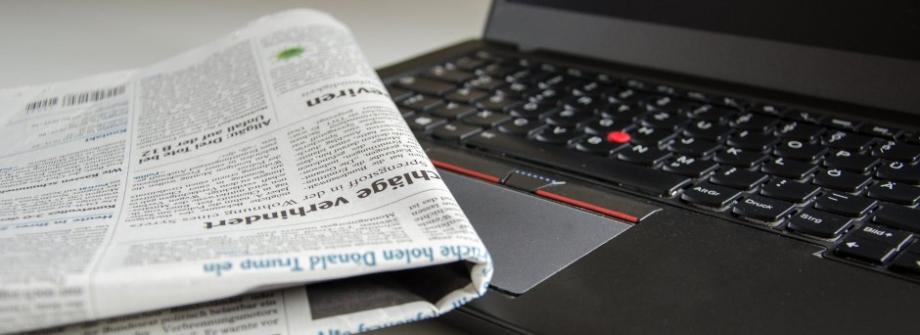
Anna Laube, LWP Secretary, Department for Hematology and Cell Therapy, Helios Klinik Berlin-Buch, Berlin, Germany, comments on the publication entitled “Cytomegalovirus breakthrough and resistance during letermovir prophylaxis” published in Bone Marrow Transplantation.
Cytomegalovirus breakthrough and resistance during letermovir prophylaxis
Garrett A Perchetti et al.
Bone Marrow Transplant (2023). https://doi.org/10.1038/s41409-023-01920-w
After allogeneic hematopoietic cell transplantation (HCT), cytomegalovirus (CMV) reactivation appeared in more than 60% of seropositive recipients and 10% of seronegative recipients with seropositive donors prior to the letermovir-era1. CMV reactivation accounts for the most frequent virus reactivation complication after allogeneic HCT and results in higher non-relapse-mortality2,3. CMV disease like CMV pneumonia or gastrointestinal CMV disease are threatening conditions with a mortality rate of CMV pneumonia as high as 70%4. It also increases the risk of developing acute Graft versus Host Disease (GvHD) 5. Therefore, letermovir, an antiviral that prevents CMV replication and effectively reduces the incidence of CMV infection6, quickly became standard prophylaxis for CMV seropositive allogeneic HCT recipients after FDA approval in 2017 at transplantation centres all over the world.
The single-centre retrospective analysis includes 226 CMV seropositive allogeneic HCT recipients who received letermovir prophylaxis between 2018 and 2020. Weekly monitoring of CMV DNA levels after allogeneic transplantation showed reactivation in 42% of patients throughout the first 100 days after transplantation, with 19% and 7% reactivating with levels of CMV DNA PCR of ≥150 IU/ml and 500 IU/ml, respectively. Clinically significant CMV infection occurred in 6% of low-risk and 24% of high-risk recipients.
As risk factors for CMV breakthrough of any CMV DNA level during letermovir prophylaxis the authors identified cumulative use of corticosteroids, GvHD prophylaxis with post-transplantation cyclophosphamide (Pt-Cy) or calcineurin inhibitors (CNI) in combination with mycophenolate (MMF) even after adjusting for donor HLA-type, while only treatment with corticosteroids and Pt-Cy were statistically significantly associated with CMV PCR levels ≥150 IU/ml.
In seven of 15 cases with CMV-DNA thresholds ≥200 IU/ml letermovir resistance testing was performed by using a CMV UL56 resistance assay. One of the seven patients showed a mutation in CMV UL56 conferring letermovir resistance.
Based on their findings, the authors conclude the paper by raising the question if pre-emptive CMV treatment during letermovir prophylaxis should not only depend on CMV DNA thresholds but also on the presence of specific risk factors for persistent CMV replication. Moreover, they consider implementation of CMV UL56 resistance monitoring in selected cases with risk factors.
Evaluation of breakthrough reactivations and infections during letermovir prophylaxis to allow a deeper understanding of pathogenesis and to support an adjustment of clinical practise in terms of monitoring CMV DNA levels and starting pre-emptive therapy remains an important scientific topic.
The results of the study are in alignment with other studies, yet they complement the existing findings.
The low incidence of clinically significant CMV reactivation that is shown, once more underlines the efficacy of letermovir.
The DNA amplification for resistance testing is an interesting supplement of the publication, but could only be performed in seven of 15 patients, which impairs the informative value, especially since Chou et al. have performed such analysis with a much greater cohort of patients recently7.
However, the results are discussed transparently and in detail and the authors’ deducted open questions could pave the way for future clinical trials.
- George, B., Pati, N., Gilroy, N., Ratnamohan, M., Huang, G., Kerridge, I., et al. (2010). Pre-transplant cytomegalovirus (CMV) serostatus remains the most important determinant of CMV reactivation after allogeneic hematopoietic stem cell transplantation in the era of surveillance and preemptive therapy. Transpl. Infect. Dis. 12, 322–329. doi: 10.1111/j.1399-3062.2010.00504.x
- Takenaka, K., Nishida, T., Asano-Mori, Y., Oshima, K., Ohashi, K., Mori, T., et al. (2015). Cytomegalovirus reactivation after allogeneic hematopoietic stem cell transplantation is associated with a reduced risk of relapse in patients with acute myeloid leukemia who survived to day 100 after transplantation: the Japan society for hematopoietic cell transplantation transplantation-related complication working group. Biol. Blood Marrow Transplant. 21, 2008–2016. doi: 10.1016/j.bbmt.2015.07.019
- Green, M. L., Leisenring, W., Xie, H., Mast, T. C., Cui, Y., Sandmaier, B. M., et al. (2016). Cytomegalovirus viral load and mortality after haemopoietic stem cell transplantation in the era of pre-emptive therapy: a retrospective cohort study. Lancet Haematol. 3, e119–e127. doi: 10.1016/S2352-3026(15)00289-6
- Erard, V., Guthrie, K. A., Seo, S., Smith, J., Huang, M., Chien, J., et al. (2015). Reduced mortality of cytomegalovirus pneumonia after hematopoietic cell transplantation due to antiviral therapy and changes in transplantation practices. Clin. Infect. Dis. 61, 31–39. doi: 10.1093/cid/civ215
- Cantoni N, Hirsch HH, Khanna N, Gerull S, Buser A, Bucher C, Halter J, Heim D, Tichelli A, Gratwohl A, Stern M. Evidence for a bidirectional relationship between cytomegalovirus replication and acute graft-versus-host disease. Biol Blood Marrow Transplant. 2010 Sep;16(9):1309-14. doi: 10.1016/j.bbmt.2010.03.020. Epub 2010 Mar 29. PMID: 20353832.
- Marty FM, Ljungman P, Chemaly RF, Maertens J, Dadwal SS, Duarte RF, et al. Letermovir prophylaxis for cytomegalovirus in hematopoietic-cell transplantation. N Engl J Med. 2017;377:2433–44.
- Chou S, Kleiboeker S. Relative frequency of cytomegalovirus UL56 gene mutations detected in genotypic letermovir resistance testing. Antiviral Res. 2022 Nov;207:105422. doi: 10.1016/j.antiviral.2022.105422. Epub 2022 Sep 25. PMID: 36170912; PMCID: PMC9759347.